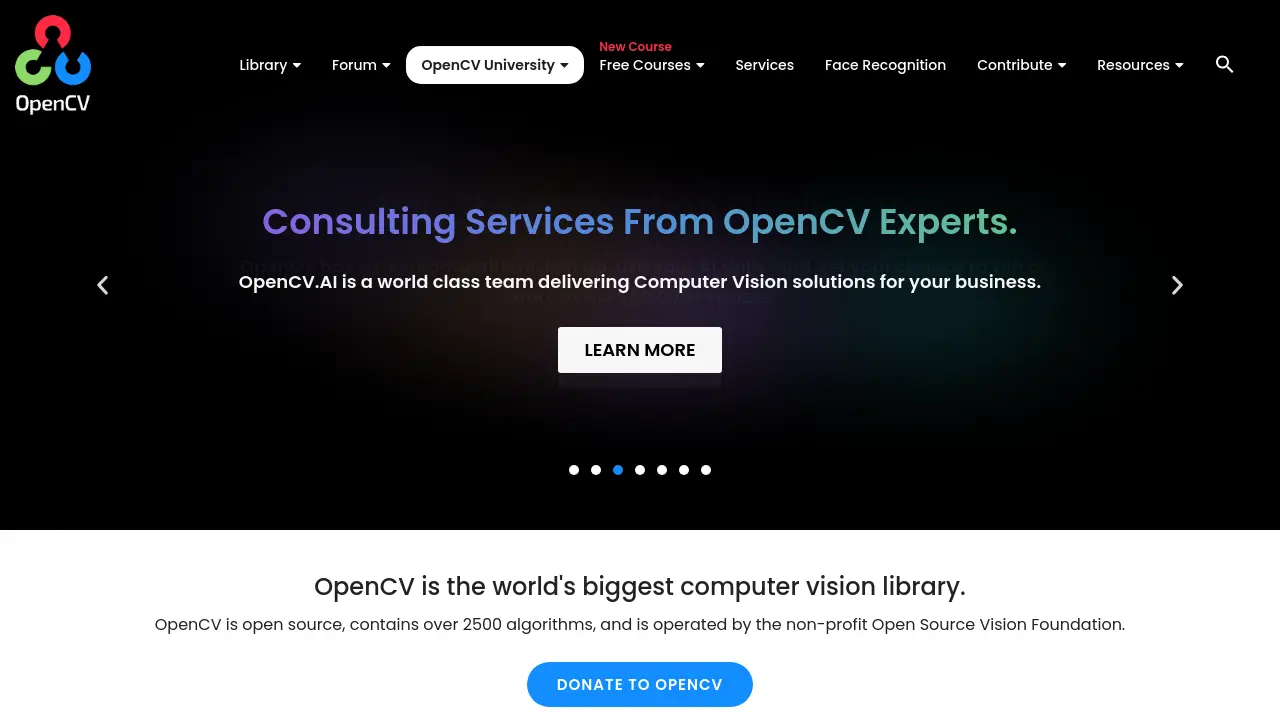OpenCV
The world's biggest computer vision library.

Description
OpenCV (Open Computer Vision Library) stands as the world's largest open-source library dedicated to computer vision tasks. Operated by the non-profit Open Source Vision Foundation, it provides a comprehensive suite of over 2500 optimized algorithms designed with a strong focus on real-time applications. This extensive library is accessible through C++, Python, and Java interfaces, ensuring broad compatibility across operating systems like Linux, MacOS, Windows, iOS, and Android.
Released under the permissive Apache 2 License, OpenCV is freely available for both academic and commercial use. Beyond the core library, the OpenCV ecosystem includes OpenCV University, a platform for learning Computer Vision, Deep Learning, and AI through various courses, and OpenCV.AI, which offers expert consulting services to deliver tailored Computer Vision solutions for businesses. Specialized functionalities, such as top-rated Face Recognition technology, are also integrated within its offerings.
Key Features
- Extensive Algorithm Library: Contains over 2500 computer vision algorithms.
- Open Source License: Released under the Apache 2 License, free for commercial use.
- Cross-Platform Compatibility: Supports Linux, MacOS, Windows, iOS, and Android via C++, Python, and Java interfaces.
- Real-Time Optimization: Highly optimized library focused on real-time processing.
- OpenCV University: Offers comprehensive courses in Computer Vision, Deep Learning, and AI.
- OpenCV.AI Consulting: Provides expert computer vision solutions for businesses.
- Integrated Face Recognition: Features top-rated face recognition technology.
- Deep Learning Support: Includes modules for integrating deep learning frameworks like PyTorch and TensorFlow/Keras.
Use Cases
- Developing real-time computer vision applications
- Implementing image and video processing pipelines
- Building object detection and tracking systems
- Creating face detection and recognition solutions
- Applying deep learning models to visual data
- Facilitating academic research in computer vision
- Powering commercial products requiring visual understanding
- Learning computer vision and AI concepts through practical application
You Might Also Like
PriceResonance
PaidTrack, analyze, and optimize your pricing strategy with our advanced AI-powered platform.
ImgAIx
FreeThe 100% Free AI-Powered Image Editing Platform
Arcana Vibes
Free TrialTarot and Astrology, personalized for you.
WireGuard
FreeSimple, Fast, and Secure VPN Solution
ContentRadar
Free TrialThe AI toolbox to boost your growth on LinkedIn